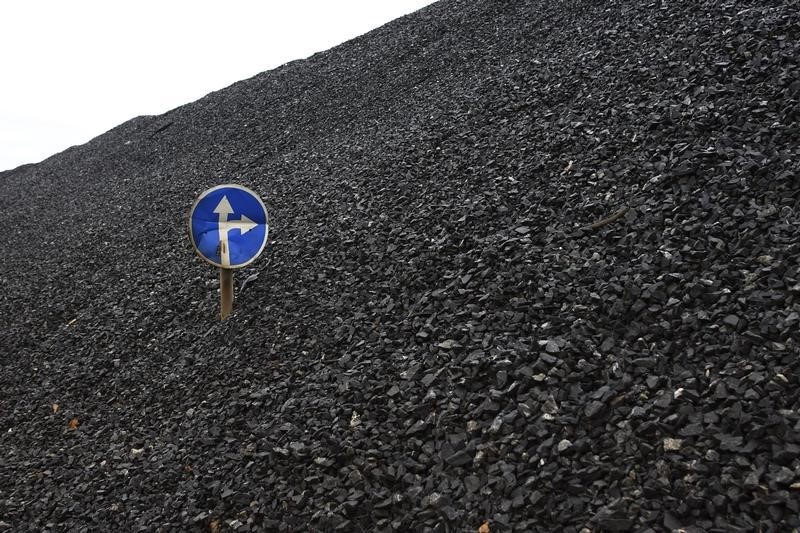(Repeats item issued earlier. The opinions expressed here are those of the author, a columnist for Reuters)
By Clyde Russell
NUSA DUA, Indonesia, June 1 (Reuters) - Something has changed in the coal industry.
For the past 22 years Asia's coal producers, traders and buyers have gathered in the Indonesian resort island of Bali to discuss the state of the sector.
In recent years these have been pretty depressing affairs as participants bemoaned the ongoing slump in prices, prayed that things couldn't get any worse and then lamented when they did.
But this year was different. For the first time since 2012 there was a mood of optimism at the annual Coaltrans Asia meeting.
What remains to be seen is whether this new-found view that the worst is past has any basis in reality, or whether it's just a different type of delusion for the beleaguered coal industry.
Much of the optimism is based on the fact that the benchmark Asian coal price, the Newcastle weekly index GCLNWCWIDX , has risen almost 3.9 percent so far this year, ending last week at $52.59 a tonne.
If that sounds like a modest increase, it has to be seen in the context of a commodity that has fallen for the past five years, and is still 61 percent below its post-recession peak in January 2011 of $136.30 a tonne. Not to mention that it's also worth little more than a quarter of its all-time high of $194.79 reached in the giddy boom prior to the 2008 global recession.
The main reason for the collapse in prices was the switch from an under-supplied seaborne market to one that was massively over-supplied as more production was brought on to meet what had been widely assumed to be China's insatiable appetite for coal.
The consensus view at the Coaltrans event this week was that the industry is now closer to balancing supply and demand than it has been for many years.
There is still over-supply in the market, but not in all grades of coal and there was even chatter of tightness in the market for high quality grades, namely those above 5,800 kilocalories per kilogram (kcal/kg) with low sulphur and ash.
And supply is still coming out of the market, mainly from the United States and Indonesia.
Indonesia, the world's biggest exporter of thermal coal, will export 22 million tonnes less this year than it did in 2015, while the United States will drop by 10 million tonnes, Fabio Gabrieli, director of commodity strategy at Mercuria, told the conference.
Of all the major exporters, Gabrieli only expects modest increases from two, Colombia and Russia, and even they are two million and three million tonnes respectively.
This lack of additional supply in the global seaborne market will help offset declining imports by top buyers China and India, which Gabrieli sees cutting purchases by four million and 10 million tonnes respectively.
But Gabrieli acknowledges that the X-factor for coal this year is China, with uncertainty over whether it will only cut imports by a relatively small amount, as he expects, or whether 2016 will mirror last year when imports crashed by almost 30 percent.
By April this year, China's imports were down 2.5 percent, or 1.77 million tonnes, to 67.25 million, according to customs data, a rate of decline in line with Gabrieli's forecast.
SOUTHEAST ASIA OPTIMISM
Gerry Feerick, Noble's director of energy for Indonesia, said there was a risk of lower imports by India as it ramps up domestic output, but higher demand from Southeast Asian nations will help balance the market as Indonesia and the United States export less.
"The market will enter a new cycle in 2016-2017, as supply tightens and mining costs provide price upside," he told the conference.
Stretching the outlook for coal to a few years and the optimism was maintained, with industry participants expecting strong growth from emerging Southeast Asian consumers, such as Malaysia and the Philippines, coupled with steady demand from China and India and traditional buyers Japan, South Korea and Taiwan.
Indonesian supply to the seaborne market was expected to diminish as the country finally starts building the 20 gigawatts of coal-fired power it has planned as part of a massive 35 gigawatt electrification programme.
As is usual at coal industry gatherings, the prevailing view is that climate change won't force much change on the industry, at least in Asia, given coal's cost advantage over other fuels.
Perhaps surprisingly there was little talk about liquefied natural gas (LNG), which has lost four-fifths of its value in the past two years as huge new projects swamp the market.
LNG is becoming increasingly cost competitive with coal and it's likely that the international oil and gas majors that own the new projects will be working on plans to boost downstream demand for their product in order to make the best of the over-supplied world they created but didn't expect.
The main point for the coal industry is that while the supply-demand balance is (slowly) being restored, there is very little fundamental justification for prices to rise much further than current levels.
Once the Newcastle price breaches $60 a tonne, it's likely to do two things; firstly tempt more U.S. coal back to the seaborne market and secondly incentivize Chinese domestic output to ramp up.
Coal's long winter may be ending, but the thaw could be just as protracted.
(Editing by Richard Pullin)
